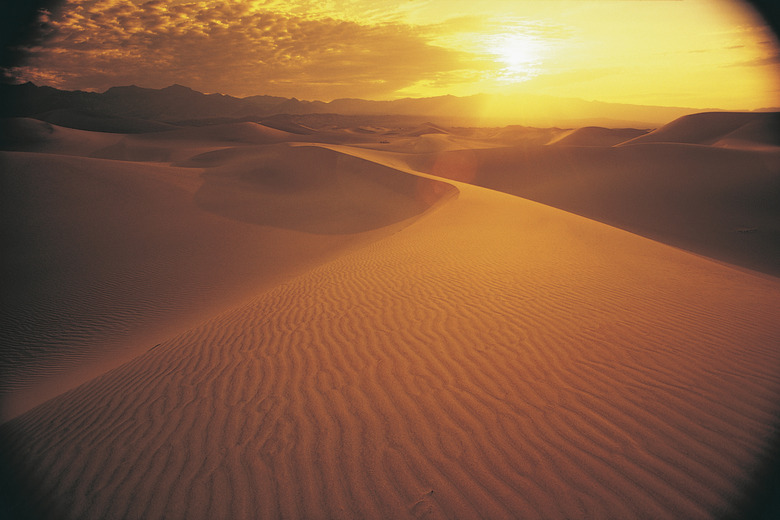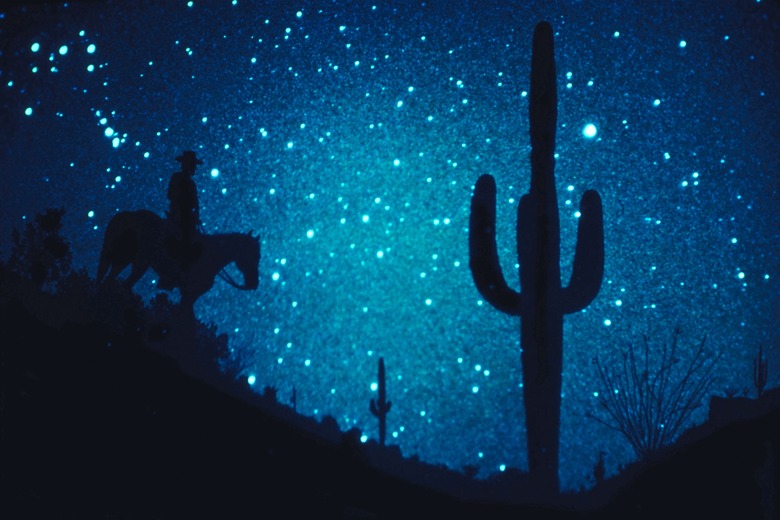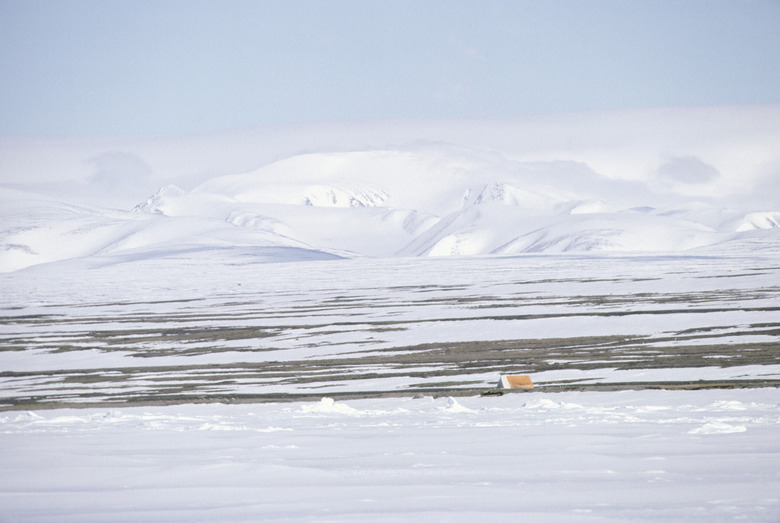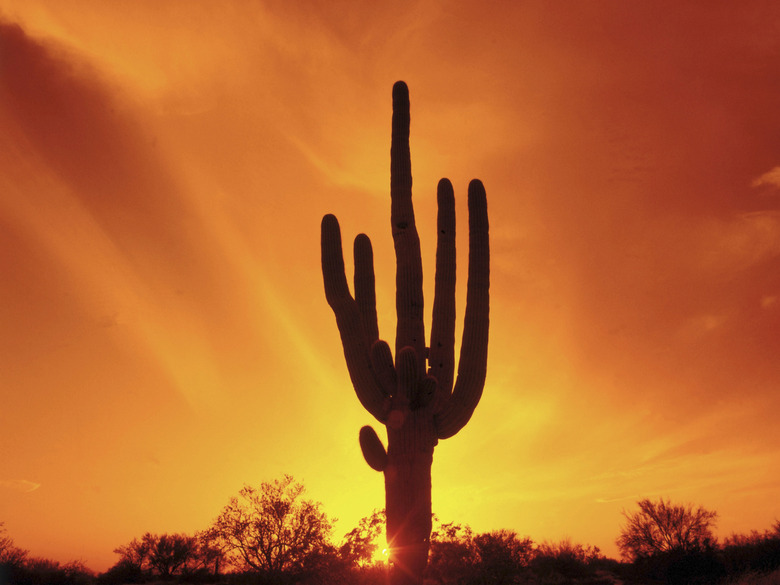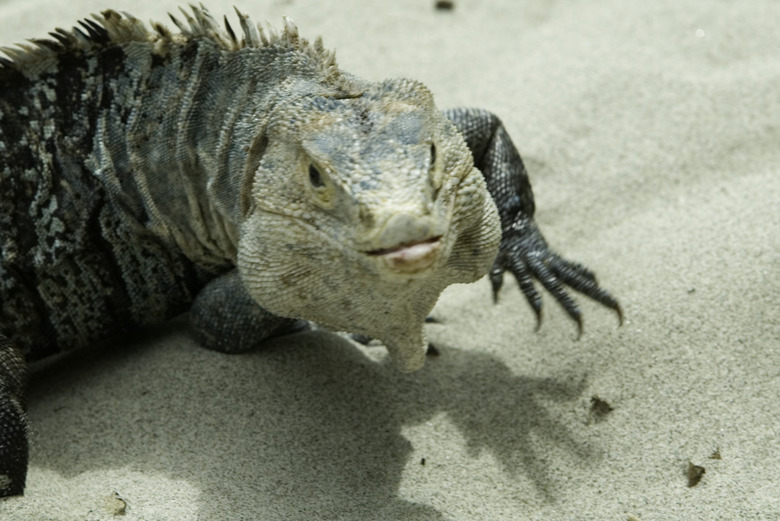What Climate Is Landlocked And Gets Little Precipitation?
Because most deserts lie in the interior of continents, they don't have water to moderate their temperatures. These landlocked climates tend to have little precipitation and great extremes in temperature. Daytime temperatures are often high, and at night, temperatures in some deserts dip to teeth-chattering lows. Because of its unique combination of conditions, only certain organisms with special adaptations can survive in such inhospitable areas.
Precipitation
Precipitation
Deserts receive less than 50 centimeters (19.7 inches) of rain per year. The Atacama Desert of Chile receives the least rainfall of all modern-day deserts, averaging a mere 1.5 centimeters (0.6 inches) of rain per year. In general, deserts in the United States have the most precipitation per year of all the world's deserts, averaging about 28 centimeters (11 inches) of rain a year. Some inland deserts form because of rain shadowing, which may be why these deserts don't see rain often. Moist air rises over mountain ranges, and rain falls on the windward, or near, sides and tops of the mountains. This depletes the moisture so that when the air mass crosses the mountains and descends into the land beyond, no precipitation falls on the leeward, or far, side of the mountains.
Hot Deserts
Hot Deserts
The typical hot deserts with which you may be familiar include the Sahara in Africa, the Atacama in Chile and the Mojave in the United States. Deserts generally lie at the extremes of temperature ranges. At the higher end of the spectrum, deserts temperatures can soar to a scorching 49 degrees Celsius (120 degrees Fahrenheit) with mean annual temperatures in the 20 to 25 degrees Celsius (68 to 77 degrees Fahrenheit) range. At the lower end, deserts can dip to a frigid -18 degrees Celsius (-0.4 degrees Fahrenheit). Deserts in the northern United States, Europe, and northern Asia, however, have more moderate climates, with daytime summer temperatures ranging between 21 and 27 degrees Celsius (70 to 80 degrees Fahrenheit) and nighttime temperatures hovering around 10 degrees Celsius (50 degrees Fahrenheit).
Cold Deserts
Cold Deserts
Not all deserts have hot temperatures; scientists classify the tundra as a "cold desert." The tundra encompasses parts of Greenland, North America, northern Europe and Asia, islands in the Arctic and Bering Seas and regions surrounding the continent of Antarctica. Extreme temperatures, a dry climate, little precipitation and a shortage of animal and plant life characterize both hot and cold deserts. Tundra conditions exist near the polar regions and on the tops of mountains and ridges. A mere 15 to 25 centimeters (six to 10 inches) of precipitation fall in the tundra per year. The tundra is so cold that a layer of ground not far from the surface is permanently frozen. The roots of plants cannot penetrate this hard permafrost layer, so tundras cannot support substantial tree species. Winters in the tundra average about -34 degrees Celsius (-30 degrees Fahrenheit) while summers average between three and 12 degrees Celsius (37 to 54 degrees Fahrenheit).
Flora
Flora
Plants like cacti, sagebrush, moss and mesquite characterize the warm deserts of the world. The cacti have needle-like leaves designed to prevent water loss. Photosynthesis, the process by which plant cells use sunlight, carbon dioxide and water to make their food, occurs mainly in the stems of these plants. The stems also store water, so they appear pronounced and fleshy. Desert plants spread their roots far and wide underground, yet close enough to the surface to soak up any available water during the rare rainstorms. Certain plants engage in allelopathy, the process by which plants inject poisonous chemicals into the soil to kill other plants' roots to reduce competition for nutrients. Because resources are scarce in these regions, desert plants devote much of their resources to protecting themselves from predators and reducing competition from other plants.
Fauna
Fauna
Animals that make their homes in deserts include small mammals and reptiles. Larger mammals have a hard time existing in deserts because their need for water is too great for the amount of water available. Reptiles tend to do well in desert conditions because their skins keep them from losing too much water. The hot sun warms their bodies to give them energy to become active enough to catch their prey during the day. Some animals hide in shaded places during the day and come out in the cool of the night. Some mammal species have adopted this nocturnal lifestyle and evolved structures, such as efficient kidneys that retain much of the water from the food they eat.
Cite This Article
MLA
Dinh, Ho-Diep. "What Climate Is Landlocked And Gets Little Precipitation?" sciencing.com, https://www.sciencing.com/climate-landlocked-gets-little-precipitation-21799/. 24 April 2017.
APA
Dinh, Ho-Diep. (2017, April 24). What Climate Is Landlocked And Gets Little Precipitation?. sciencing.com. Retrieved from https://www.sciencing.com/climate-landlocked-gets-little-precipitation-21799/
Chicago
Dinh, Ho-Diep. What Climate Is Landlocked And Gets Little Precipitation? last modified March 24, 2022. https://www.sciencing.com/climate-landlocked-gets-little-precipitation-21799/
